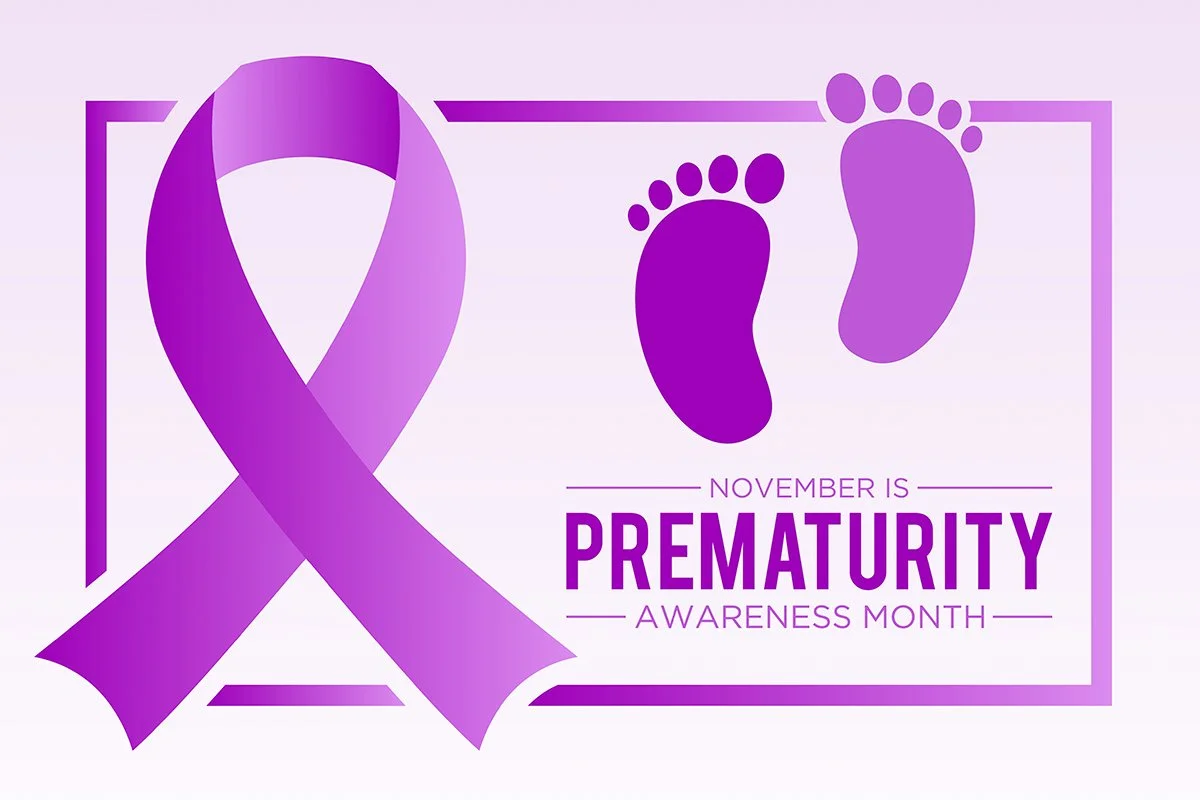Prematurity Awareness Month

By Tabitha Ervin
FWIS Editorial Director
November is Prematurity Awareness month which raises awareness about premature birth and its health consequences. During this month, organizations like the March of Dimes and others promote education on prevention, support for affected families, and the importance of prenatal care. The official color for the month is purple, which symbolizes sensitivity.
As a member of Jack and Jill of America, a mothers organization focused on nurturing African American children and teens, a member of Delta Sigma Theta Sorority, Inc, an organization focused on strengthening and supporting black communities and a black mother myself, I am acutely aware of the higher risks to women of color for premature births especially black women. Black infants are typically more than twice as likely to be born premature compared to other racial groups with contributing factors including inadequate healthcare coverage, chronic disease, poverty, and lack of prenatal education.
I recently led a regional community service project supporting Prematurity Awareness Month and telling the stories of women in the Midwestern region chapters of Jack and Jill (specifically in Michigan and Ohio) who have had a premature birth or a child served by their local NICU (neo natal intensive care unit). Mothers shared, first the blessings of enduring these challenging times with their children in the NICU but also the stories of support from others needed to make it through this difficult and stressful time. The teens helped to package over 400 kits for kids in families that are waiting for a sibling in the NICU and moms supported by donating books and money in which we were able to give the Helen DeVos Children’s Hospital in Grand Rapids a $10,000 donation to support these families.
Helpful information can be found on the March of Dimes website such as signs and symptoms of preterm labor and what to do if that occurs, information about preeclampsia which is when a pregnant mother has high blood pressure which can cause preterm birth and various other useful information.
There is another helpful website I discovered in my research that I was unaware of, the WIC Works Resource System under the Department of Agriculture. The Centers for Disease Control and Prevention (CDC) also offers information and resources about preterm birth, including a downloadable PDF about the growth of a baby throughout pregnancy, frequently asked questions that include a list of activities to do (or stop doing) to lower the risk of preterm birth, warning signs of preterm labor, and more.
Whether you are an expectant mother or have not yet become pregnant, these resources are invaluable to learning and understanding the possibilities of preterm births.
During Prematurity Awareness Month, it is important to:
- Educate the public: The month aims to spread information about the causes and effects of preterm birth, which is defined as birth before 38 weeks of gestation.
- Promote prenatal care: Educational materials highlight the importance of regular check-ups, healthy lifestyle choices (like proper nutrition and avoiding tobacco/alcohol), and recognizing the warning signs of preterm labor.
- Support families: Events and initiatives help raise awareness and provide support for families affected by prematurity, including those with babies in the Neonatal Intensive Care Unit (NICU).
- Advocate for research and prevention: Organizations advocate for continued research and the implementation of strategies to prevent premature births and improve outcomes for babies born too early.
Locally, please do your research and connect with organizations that support moms and babies such as Healthier Moms and Babies, local hospitals, and other nonprofits. Knowing the signs and symptoms of preterm birth along with risk factors can help as well.
